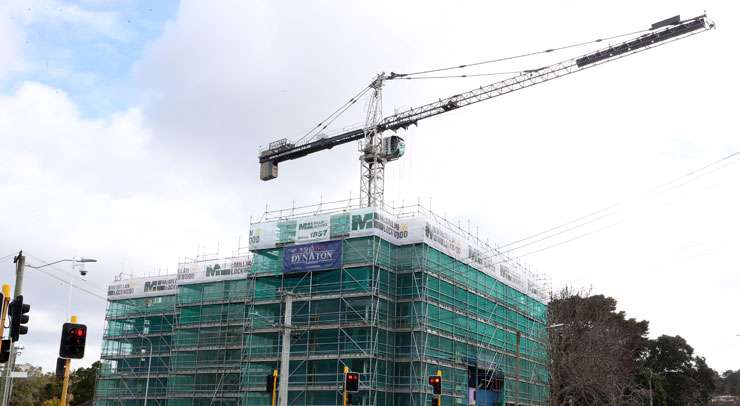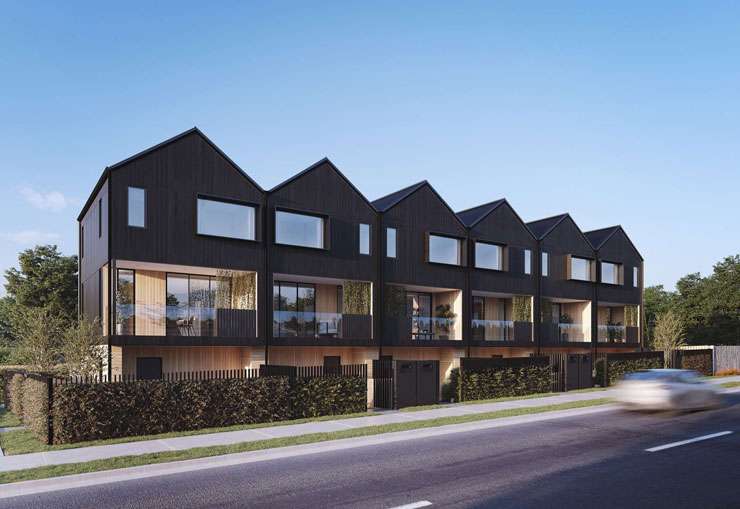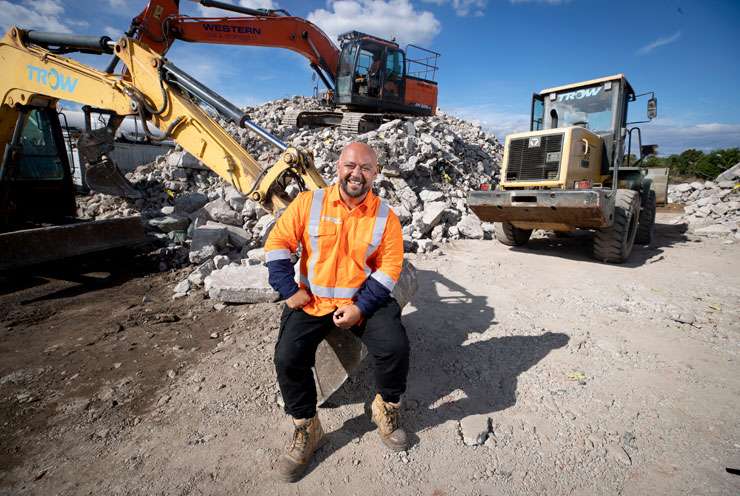New home-builders, renovators and demolition companies are swamping landfills with reusable and recyclable material. Last year, as a nation, building and renovation sent more than double the total waste to landfill compared to household waste collections.
“To put it into perspective, you’d have to set your kerbside bin out weekly for more than 30 years to generate that much waste,” says Mark Roberts, senior waste planning advisor at Auckland Council.
With climate change a growing issue, innovative renovators are finding ways to go skip-free in their eco-friend builds, salvaging, repurposing, recycling or finding innovative ways to save virtually every item that would normally be dumped into skips.
The statistics regarding building and construction waste can be boggling:
Start your property search
• An average new house build produces 4.5 tonnes of waste, with materials worth more than $31,000 if they were saved rather than sent to landfill.
• Auckland alone produced at least 568,935 tonnes of construction and demolition waste in the 2018/19 year. That is the equivalent of 23,155 shipping containers.
Roberts adds that New Zealanders have a smash mentality when it comes to strip out or demolition prior to renovation. “That’s reinforced on what you see on renovation programmes on television every day,” he says. “If you’re doing a reno you start by smashing stuff with a sledgehammer.”
There are more consents issued for renovations than new builds, says Roberts. Add to that renovation work that doesn’t need consent and the problem is huge.

Auckland is in the midst of a building boom. Photo / Fiona Goodall
Francesca Lipscombe, general manager of the New Zealand Ecolabelling Trust, advocates a change in mentality. “It’s probably quite easy for small construction companies to make some changes to the way they do things to improve environmental outcomes but there has to be the desire to do so,” she says.
A Ministry for the Environment study from 2019 showed that only 28% of waste from construction sites is recovered, despite case studies and construction waste modelling indicating a diversion rate of 70% or higher can be achieved, she says.
Roberts says eco-friendly renovation is usually driven by a homeowner interested in sustainable living. Homeowners, says Roberts, who want their renovations to be more environmentally friendly need to have an ethos of waste minimisation. They should:
• Think about how they design;
• The materials they choose;
• The planning for the project; and
• Create a written plan that can be used to train, educate and inform your contractor and subcontractor.
Renovators can “design out the waste”, says Matthew Cutler-Welsh, business development manager residential at the New Zealand Green Building Council, but concedes that green renovations can be more difficult than green new builds. “Per area of renovation, you're much more likely to generate more waste than if you were doing a new build because a lot of builders have a yard where they can stockpile some products. If they just need a small piece of plasterboard, they probably got some left over from another job. If it’s a renovation project and you need half a square metre of plasterboard, (it) doesn't come in half a square metre.”
Another reason it’s easier with new builds is the sequencing of the build process, says Cutler-Welsh. You might have soil first, then concrete and they’re easy to separate out as the build goes on.
Multiple organisations and public bodies are working to reduce building waste in New Zealand. Yet most suburbs and towns have skip after skip full of reusable or recyclable materials such as half bags of insulation, wood offcuts, and even large quantities of cardboard.

Skip-free development: Designs for new townhouses in Auckland’s New Lynn. Photo / Supplied
The lack of zero-carbon building and construction is in part because builders are fixed in the way they do things, says Roberts. They will eventually find that the cost of disposing of skips increases as polluters are required to pay more for councils to meet their climate goals and reduce their region’s carbon footprint.
Homeowners and builders sometimes assume using a skip is the cheapest and easiest way to dispose of unneeded materials. They often don’t factor in all the costs involving using a skip, such as the administration of ordering and pickup, and the health and safety costs onsite, says Roberts.
There are shining examples of builders and other tradies adopting a more eco-friendly approach to their work, often because of their own personal sustainable living journey. Roberts cites a skip-free build of eight units taking place currently in Auckland’s New Lynn, which is being studied by Unitec. The builder, Nigel Benton, started the zero waste project at the point of talking to the architect.
Benton sits on the board of Master Builders Auckland and decided to pick up the challenge of a skip-free build for the build at 40 South Titirangi Road. “I thought if I could do a study of how it’s done it would be easier for other builders. I could go around the different [Master Builders] branches and who them how it’s done. It’s not as hard as we think.”
The build is being followed by Unitec as part of a project looking at plastic reduction.
Unitec’s Environmental Solutions Research Centre (ESRC) is working with Benton to find options that reuse, and recycle plastics so that their resource potential can be maximised whilst waste is minimised. ESRC’s role is to help with on-site education and waste management systems, as well as to analyse and audit all plastic wastes generated on-site.
“When timber comes it's all covered in plastic,” says Benton. “The drainage pipes. The conduits. They’re all in plastic bags. All of the stuff just keeps coming (in plastics). It doesn't need to be”.
Little by little the approach to renovation waste is becoming more eco-friendly in New Zealand. Companies such as Junk2Go and Green Gorilla have sorting facilities to ensure that much of the waste is diverted away from landfills. Some offer services to sort onsite.

Saia Latu, who runs a waste salvage company, TROW Group. Photo / Dean Purcell
A small number of demolition contractors are also taking a waste minimisation approach. TROW Group, for example, salvages more than 90% of materials from its deconstruction work. From humble beginnings in a tin shed, founder Saia Latu and business partner Joe Vagana have built a company that employs 50 people and salvages materials that are then passed on as recycled materials to marae, schools, housing, and churches in New Zealand and the Pacific.
“It might take two or three more days to deconstruct a building rather than demolish it, but in 20 years’ time, it will have been 1000 times less expensive to have saved those materials instead of sending them to landfill,” says Latu.
Owners and builders who chose to do the process themselves can separate items onsite. Many can be forwarded on using the likes of Trade Me, Freecycle, local Facebook groups or apps such as CivilShare, which is growing in popularity in the building and construction sector. “It does take a little bit (more) time and effort,” says Roberts.
Onsite isn’t the only way to be eco-friendly and divert non-waste from landfill. It can also be done at transfer stations as well. A number of waste diversion operations have sprung up around the country over the past 20 years often sponsored by councils. One of the early ones is Xtreme Zero Waste. Of 2610 tonnes of waste that passed through the facility in Raglan, 76% by volume was diverted from landfill. In the woodyard alone 324 tonnes of wood was diverted, says Sarah Lancaster, communications specialist at Xtreme Zero Waste. “This is just a portion of the diversion as there is also metal, plumbing and electrical materials from construction and deconstruction.”
Like many things New Zealand is behind many other similar countries. Overseas, says Cutler-Welsh, many of the elements of new homes and renovations are manufactured offsite where there is greater energy efficiency, lesser dependency on fossil fuels and less waste. Leftover materials are reused often, not thrown in the skip.
For more information visit:
• Makethemostofwaste.co.nz/construction-waste/
• Level.org.nz/material-use/minimising-waste/



